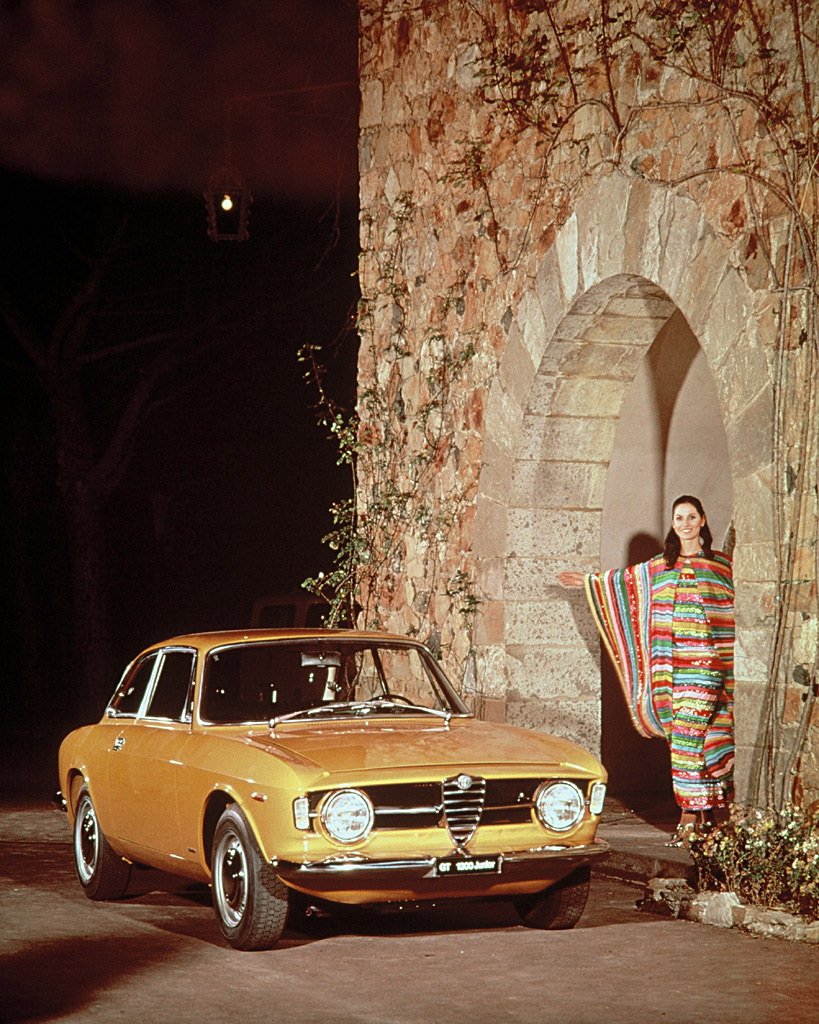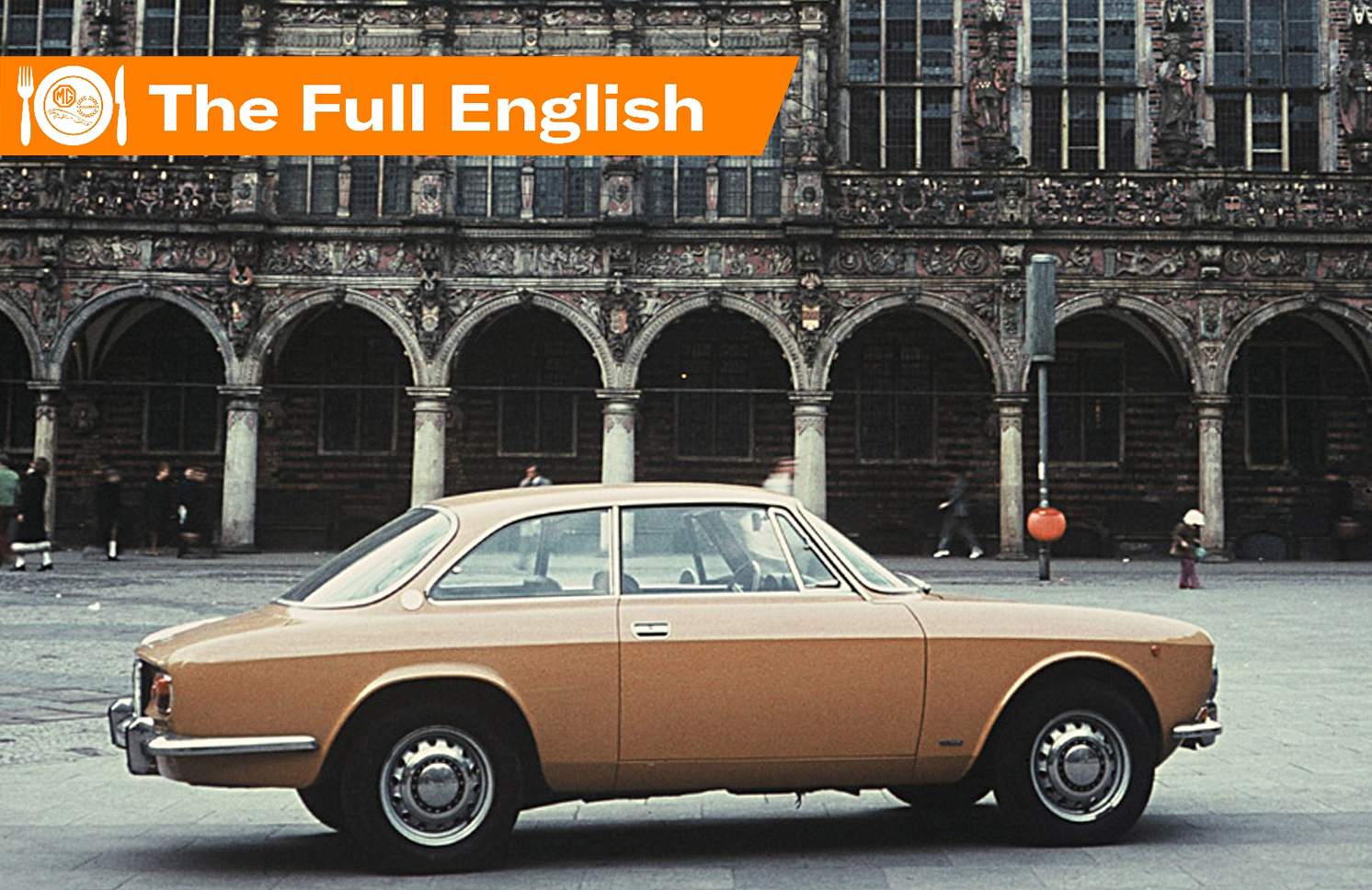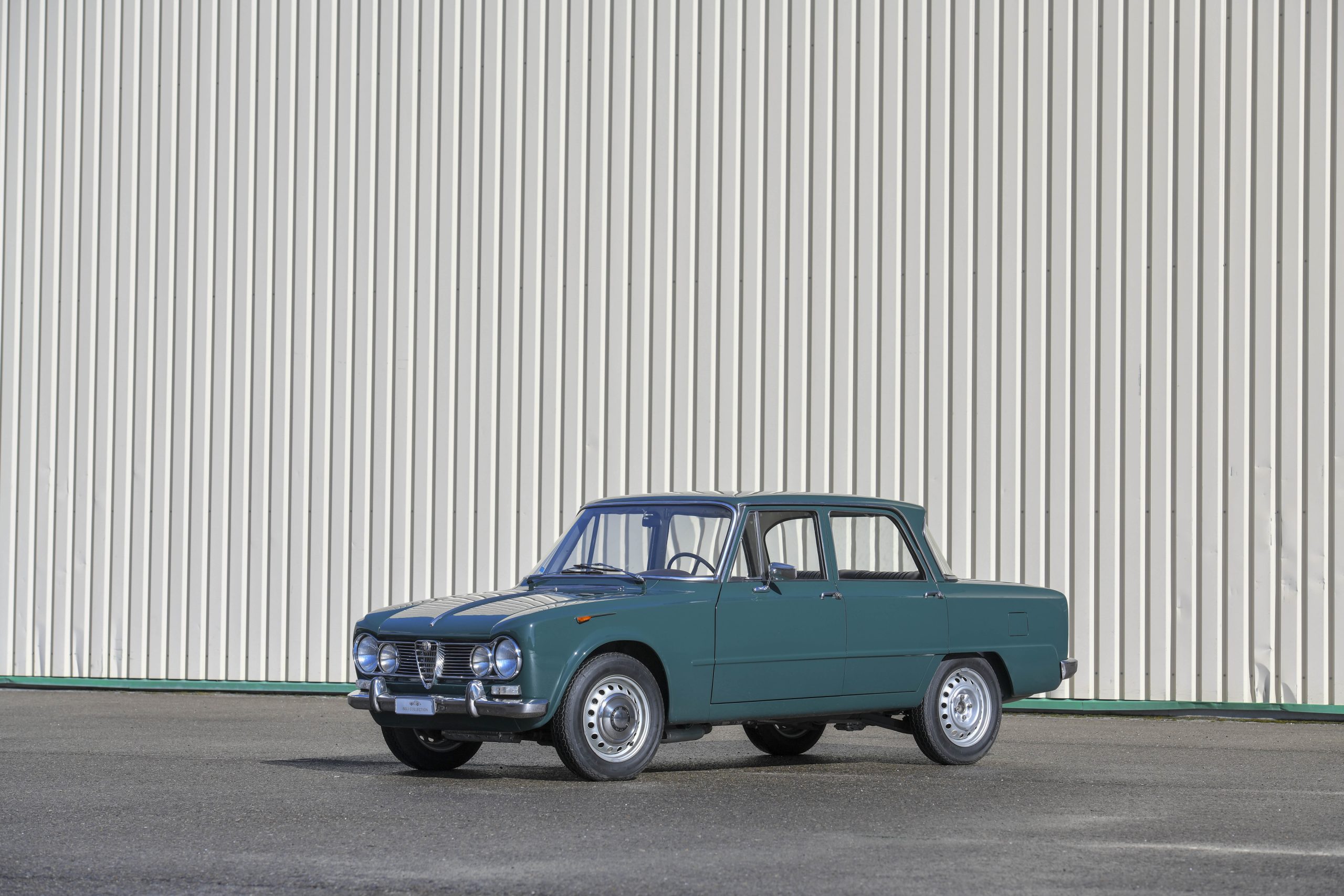The plan had been to link the recently launched Alfa Romeo Junior, a Stellantis EV crossover given a substantial looks-and-handling upgrade by the cross and snake, with the subject of this piece, Giorgetto Giugiaro’s Alfa Romeo 105/115 – a.k.a. the Alfa Romeo GT Junior – produced in various forms between 1963 and 1977.
Well, stuff the plan, because really and truly, the original Junior is a masterpiece. It was designed by Giugiaro as “a young man’s car,” when he was a precocious 19 years old and has such virtuosity of line and perfect proportions that many of today’s car designers now have restored examples in their personal collections. Perhaps we shouldn’t have made such rock stars of them that they can afford such flights of fancy, but the fact does, however, conjure a fantastic scene.

Imagine Giugiaro, now 86 years old, rolling up one day at their glitzy designer gaffs. Suited in immaculate Armani, oozing Italian sprezzatura style, he would climb out of an original Fiat Panda, which he also designed, point a gnarly finger at them and quote Percy Shelley: “My name is Ozymandias, King of Kings; Look on my Works, ye Mighty, and despair!”
At which point their Alfa would disappear in a column of dust.

Well, make that rust, because that was fate of so many of these 105/115 cars built on a shortened Giulia TI platform. Expensive, occasionally unreliable, and not really suited for year-round use, there aren’t many of these lithe and lovely coupés around anymore.
My friend, Zsolt Csikós, has recently restored one. “It’s far from a perfect car,” he says, “but the work is so hard and they were built with little thought for the weather. At the rear of the front wings, the two skins meet the front and rear sections of the sills and a strengthening panel. They all sit next to one another and are sprayed by the rain and salt off the front wheels. And the Italians didn’t really understand rust inhibiting in those days.”
As an aside, Giugiaro was working for Carrozziere Bertone at the time; he stayed from 1959 to 1965. The Turin-based coachbuilder had been founded in 1912 by Giovanni Bertone, and like all Italian carrozzieri, the shop was equal parts craftsmen, technicians, and artists. Which proved a natural for the nascent car industry into which Bertone moved in the 1920s. Commissions from Lancia and Fiat showed the company’s impeccable finish and fine eye for design, and the company flourished with cars such as the Lancia Artena and Aprilia and Fiat’s 527 Ardita.
Giovanni’s son Nuccio joined the company and after World War Two eventually took over. With French coachbuilders suffering as a result of the 1945 French recovery ‘Plan Pons’, which favoured larger manufacturers at the expense of the small coachbuilders, the Italian carrozzieri were about to enter their salad days.
By the 1950s, Bertone was receiving international commissions to add its design sparkle to mass-produced automobiles, but the specials such as the Alfa Romeo BAT 9 and 2000 Sportiva were still coming. In 1954, it cemented a debt of honour with Alfa Romeo when it produced the Giulietta Sprint prototype in a hurry, which got Alfa out of a self-made bind with winners of a car lottery, which had accompanied a share sale to raise funds.

Bertone moved offices to Grugliasco, west of Turin, and it was a talent show of the time. Marcello Gandini was head of design producing such eye-catchers as the Lamborghini Miura, and the young Giugiaro was entering the age of the Italian GTs with designs for Aston Martin, Alfa Romeo, Ferrari, BMW, and Maserati. At the same time, the company was stepping up production of the Fiat 850 Spider.
Stronger and stronger, higher and faster. One estimate suggests a total of new models built under Nuccio’s watch at over 90. It couldn’t last, of course, and by the time Nuccio died in February 1997, carmakers were beginning to realise the power of design and setting up their own central design offices. I’d argue they’ve never reached the highs of the old carrozzieri, but as the commissions fell away, the Italian houses tumbled like dominos. In the 2010s, Bertone ran into difficulty with threatened bankruptcy, family spats, and the dissipation of the name across various companies. There is some hope for Bertone, after it was acquired by Ideactive and the reveal of the 1100bhp GB110 prototype supercar in 2022.

But if the future seems uncertain, the past is rock solid, and the 105/115 is part of that history. Though if you chose to delve too deep, you enter a world as sticky and complicated as a bowl of pesto verde alla genovese sauce on casarecce pasta.
Basically, most of the Bertone coupés were 105 models: The Sprint GT was produced between 1963 and 1966 (there was a little-known cabrio version, too). Then came the Sprint GTV (V for veloce, or fast), 1965 to 1968, the 1750 GTV was a strong selling model from 1967 to 1972, and the 2000 GTV, which was also popular between 1971 to 1976.
The best-selling model was the 1.3-litre GT Junior, more than 91,000 of which sold between 1965 and 1977, and the 1.6-litre version of the same between 1972 and 1976. GTA models were the legendary lightened and modified racing models. The 115 models were exports to America, but there are exceptions – aren’t there always?
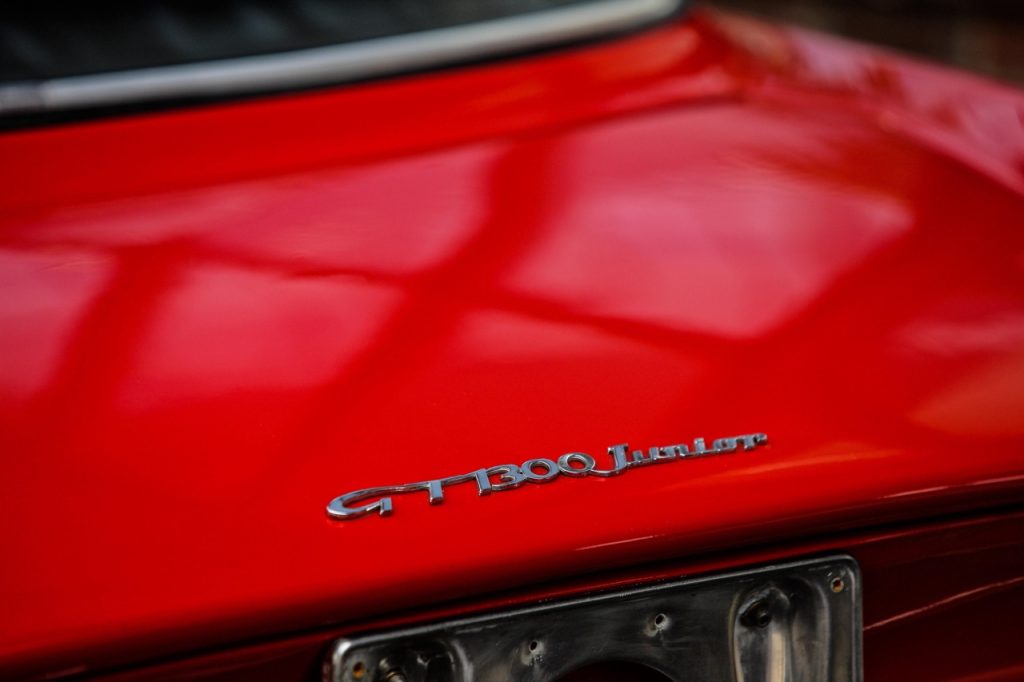
Despite the 1963 launch and the appearance of the car at several of the Society of Motor Manufacturers and Traders test days, it took Motor magazine almost five years to get hold of an example, the GT 1300 with the step-front (scalino) and a five-speed gearbox. “Gent’s Natty GT” they titled it, and judging by the cornering angle of the header photograph, they enjoyed their week with the car very much indeed. That impression is further evidenced by the fact that they drove this 960kg, 1290cc four-seat coupé over the Channel and did 1250 miles averaging 25.3mpg on 98 octane fuel all the way. Nice work if you can get it . . .

The twin cam, with its 103bhp and 103lb ft, received special praise for being smooth and tractable and capable of propelling the £1649 GT 1300 to a top speed of 102mph, with 0-60mph coming in 13.8sec. In its performance versus engine size, the testers compared it to the Lotus Elite and its Coventry Climax FWE 1.2 engine. The Type 14 Elite went out of production by 1963, but a 1960 Motor road test of a £1966 model resulted in a top speed of 112mph, 0–60mph in 11.4sec, and fuel consumption of 40.5mpg.
In 1967, Autocar magazine’s testers wrung out the five-speed Alfa to a top speed of 108mph, with 0–60mph in 10.9sec and a return 25mpg. “Acceleration much quicker, fuel consumption about the same,” they said, with “good roadholding and superb braking . . . [and] strong class winning credentials.”

When it came to direct comparisons, however, the Alfa’s high price counted against it, and ultimately made these Bertone coupés a rare sight on UK roads. An Austin-Healey 3000 with its Westminster six-cylinder engine and overdrive cost just £1198 and would leave the Alfa standing. Similarly, the £1370 Gilbern GT, the £1516 Reliant Scimitar, and the £1471 Sunbeam Tiger. None of them was as good looking as the Alfa, but recall here that in answers to parliamentary questions, Roy Hattersley, minister for labour, replied that the average weekly wage for a UK manual worker was £20 11s and 7d.
Leaf through the 1969 Motor Road Test annual, and there was the Alfa Romeo 1750 GTV coupé, £2248 worth of high-speed fun with – according the testers – “superb” road-holding. But in the same year book was the £1121 Ford Capri 1600GT, the spacious £1592 Opel Commodore coupé, and the sophisticated £1661 Lancia Fulvia Coupé Rallye, which all debuted in that year.
But what a machine that Alfa was, with its servo-assisted disc brakes all round, its wishbone front and coil-sprung live-axle rear suspension. And that engine – oh, that engine.
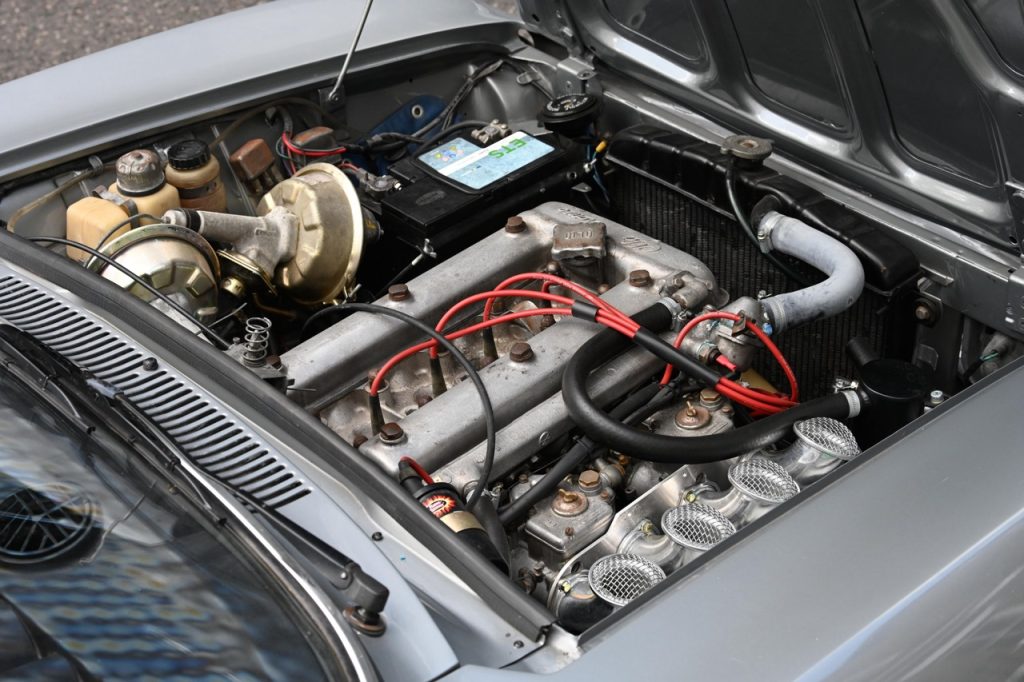
In his book Legendary Car Engines, author and journalist John Simister credits the origins of the twin-cam four layout to the pre-World War Two designs of Vittorio Jano for his series of mostly twin-overhead camshaft six- and eight-cylinder engines.
Jano’s brilliance set a high-tech, high-revving pattern for Alfa Romeo in the minds of management and the public; even the most common-or-garden saloon required a little jewel to be nestling under the bonnet. So it was with the all-aluminium four cylinder, developed under the watch of Orazio Satta Puliga, Alfa’s design and engineering chief, who specified hemispherical combustion chambers, 90-degree valve spacing, and twin overhead cams with a crossflow layout for the 1900 saloon of 1950. This was at a time, remember, when not all rival engines even had overhead valves.
To drive a Bertone coupé is to experience a combination of delicacy and feedback. The engine has a thoaty rasp, and whether on Dellortos, Webers, or Solex carbs, it will thank you for a bit of warming. The five-speed slots with precision and the brakes are firm but not wanting for stopping power, especially compared with cars of the period.
On a decent country road, any Bertone coupé is a delight provided it’s been looked after and not over-tyred. The steering flicks back gently into your hands, the short gearing means you are busy at the clutch and stick, and depending on which engine you’ve got, this will determine the amount of work you have to do. Late 2000 cars didn’t rev quite so eagerly, while the early 1.3s are screamers winding the counter round to 7000rpm.
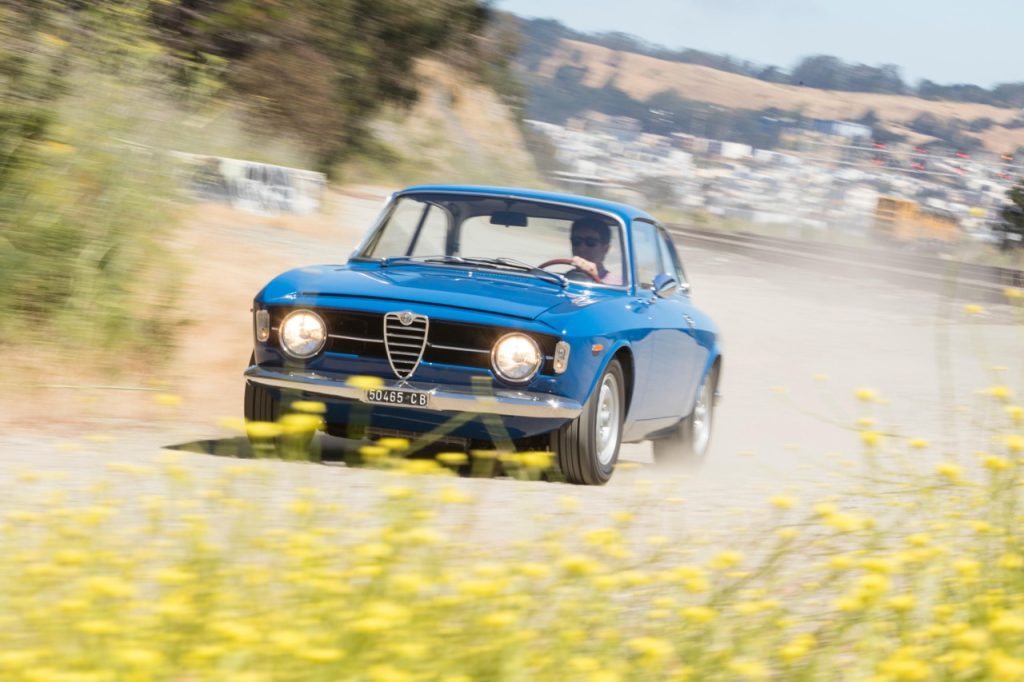
Opinions differ as to which is best, but my money is on the 1750 GTV, a vivacious engine which still howls round the clock but has enough pulling power for droning traffic conditions. A limited-slip differential is a nice addition, but it can increase understeer on a trailing throttle.
It’s difficult to put your finger on why they are just so nice, but they are. Perhaps it’s the looks, and the diminutive size also helps as it makes these four-seat cars so easy to place on the road. They aren’t spectacularly fast, but they have a delicacy that simply isn’t there with some of the contemporaries. Then, of course, there’s the history, the racing, and the crowd that will surely form wherever you park.
Trouble is, these coupés can be a kit of parts; at one time new parts weren’t available and instead bits were used from donor cars like an Italian swaperama. Front ends, rear ends, doors, roofs, engines, gearboxes, and differentials could all be changed around.
Rust is a huge issue, and identifying what a car is and, more importantly, what it is not, can be baffling and sometimes as ephemeral as the location of an indicator. It’s not often we recommend starting with a specialist, but here we do. Someplace like Veloce in London will steer you clear of at least some of the pitfalls. There’s nothing wrong with a bitsa car provided it has been done properly and to a sound shell and that you haven’t paid for originality that isn’t there. Alfa owners clubs can help, too, especially the forums, which contain a wealth of knowledge.
Steer a way through the pasta, though, and these charming little cars are a touch of class, the sort of whip which makes you want to wear a suit and polish your shoes. Don’t try too hard, though – remember the sprezzatura style and think Italian . . .
